Photos: Russia’s Fifth Column
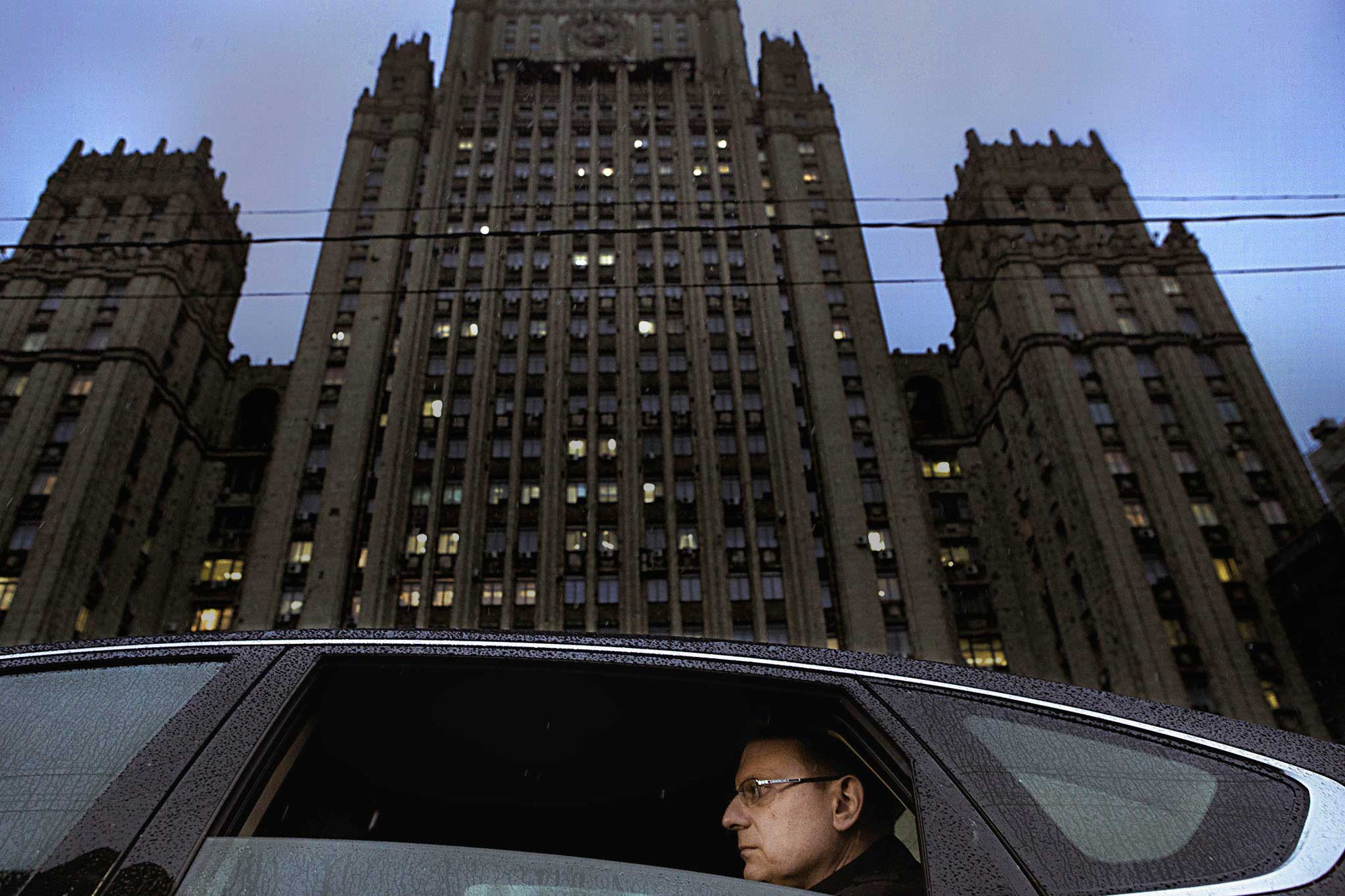
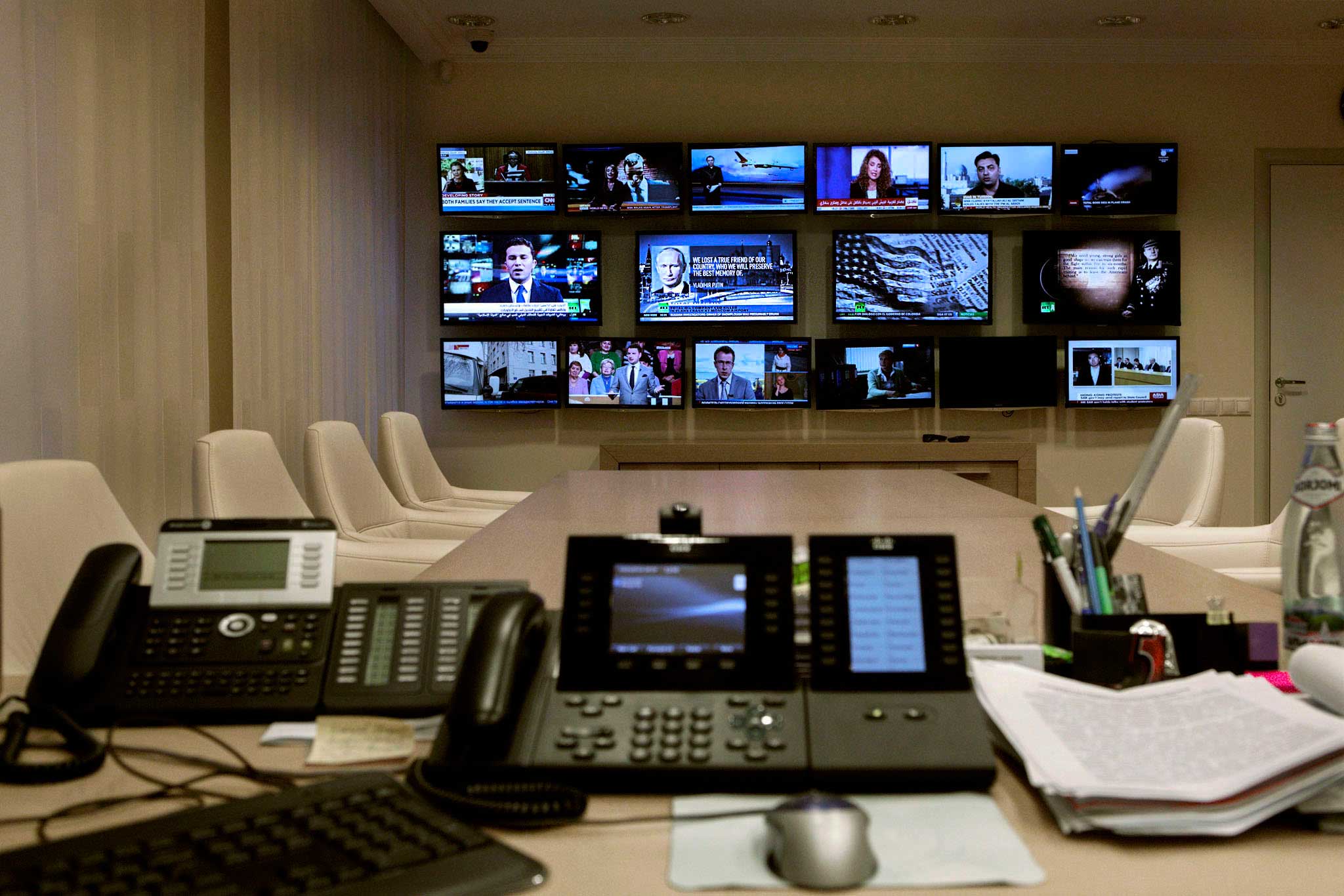

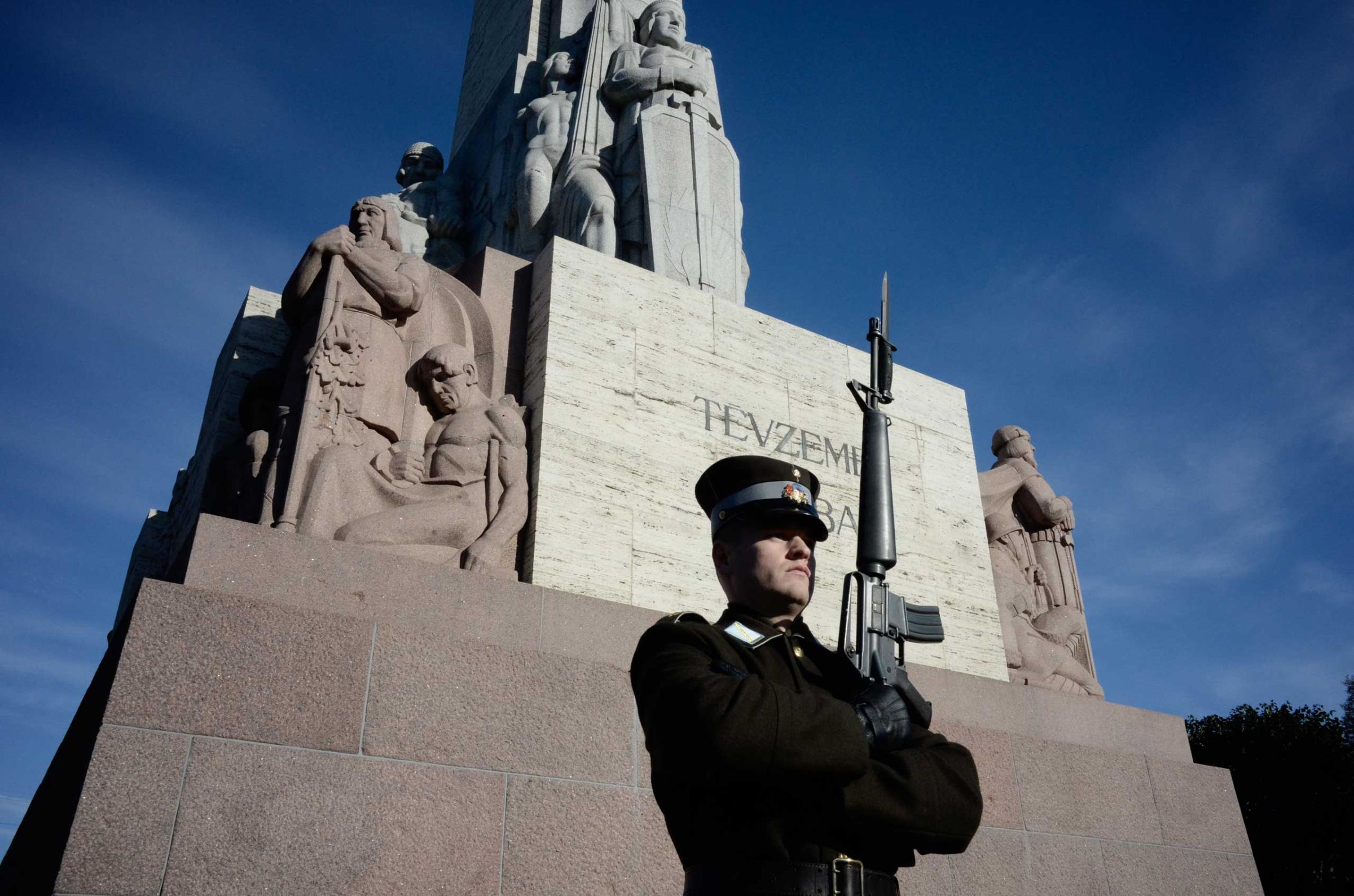
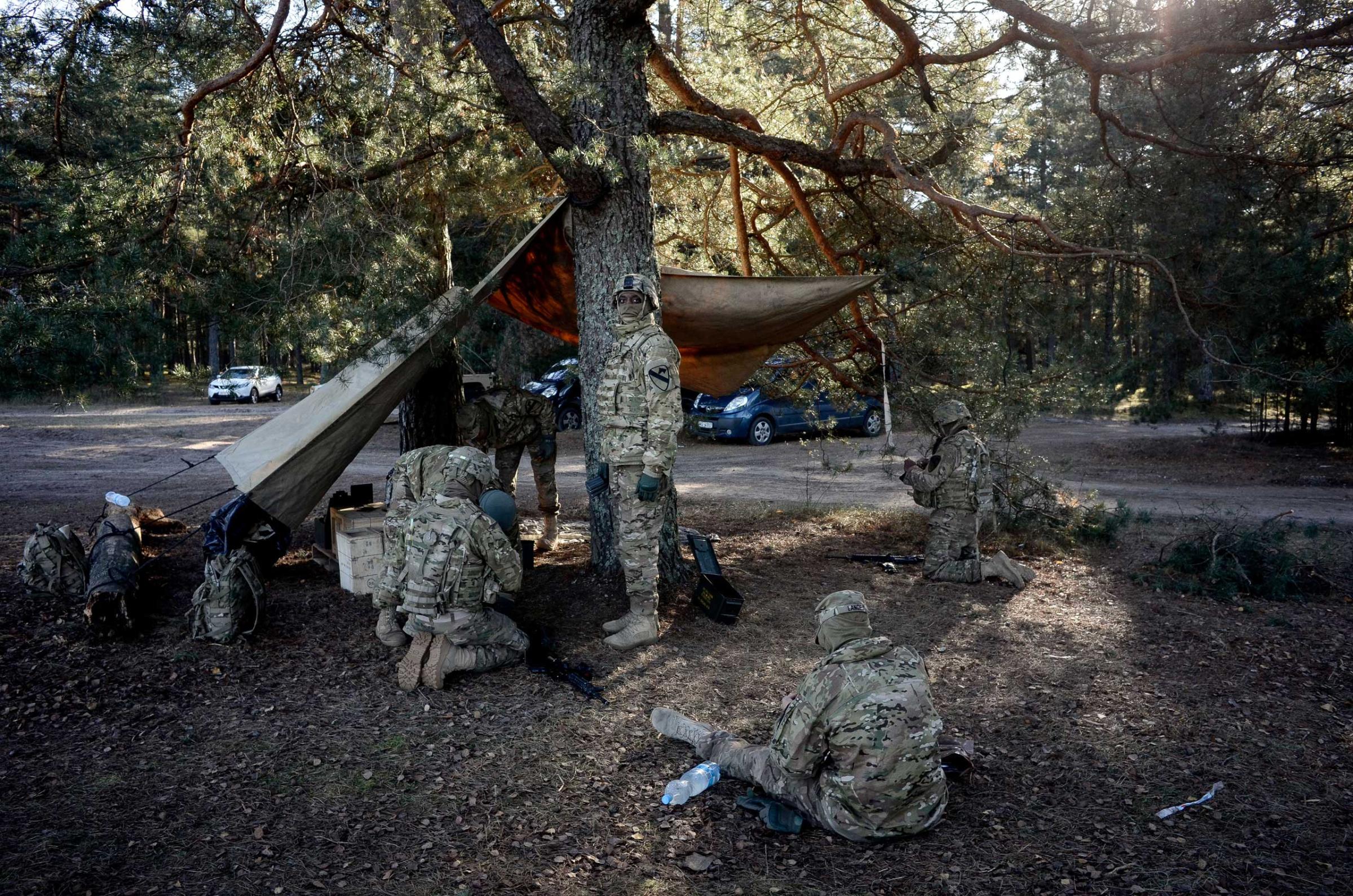
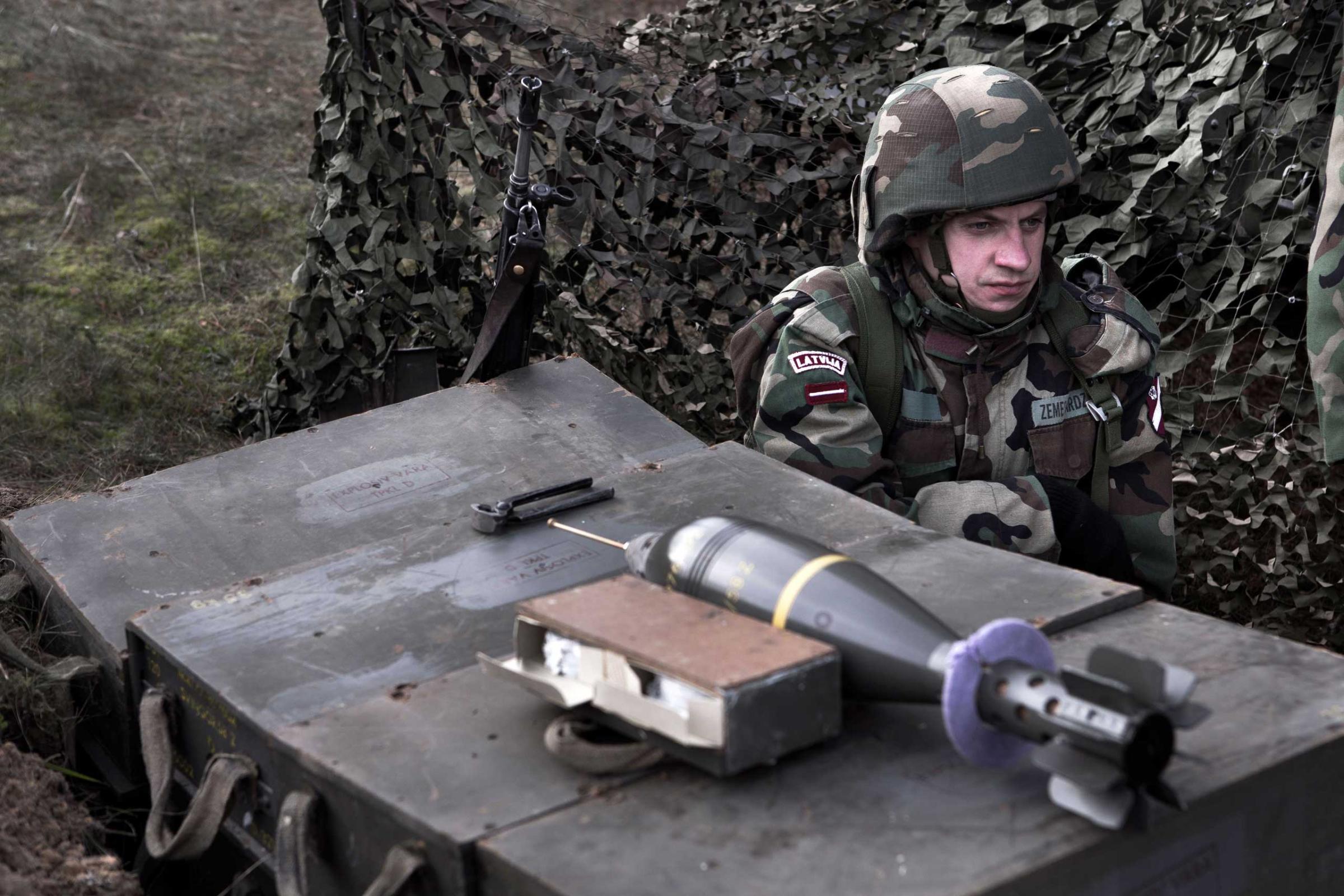
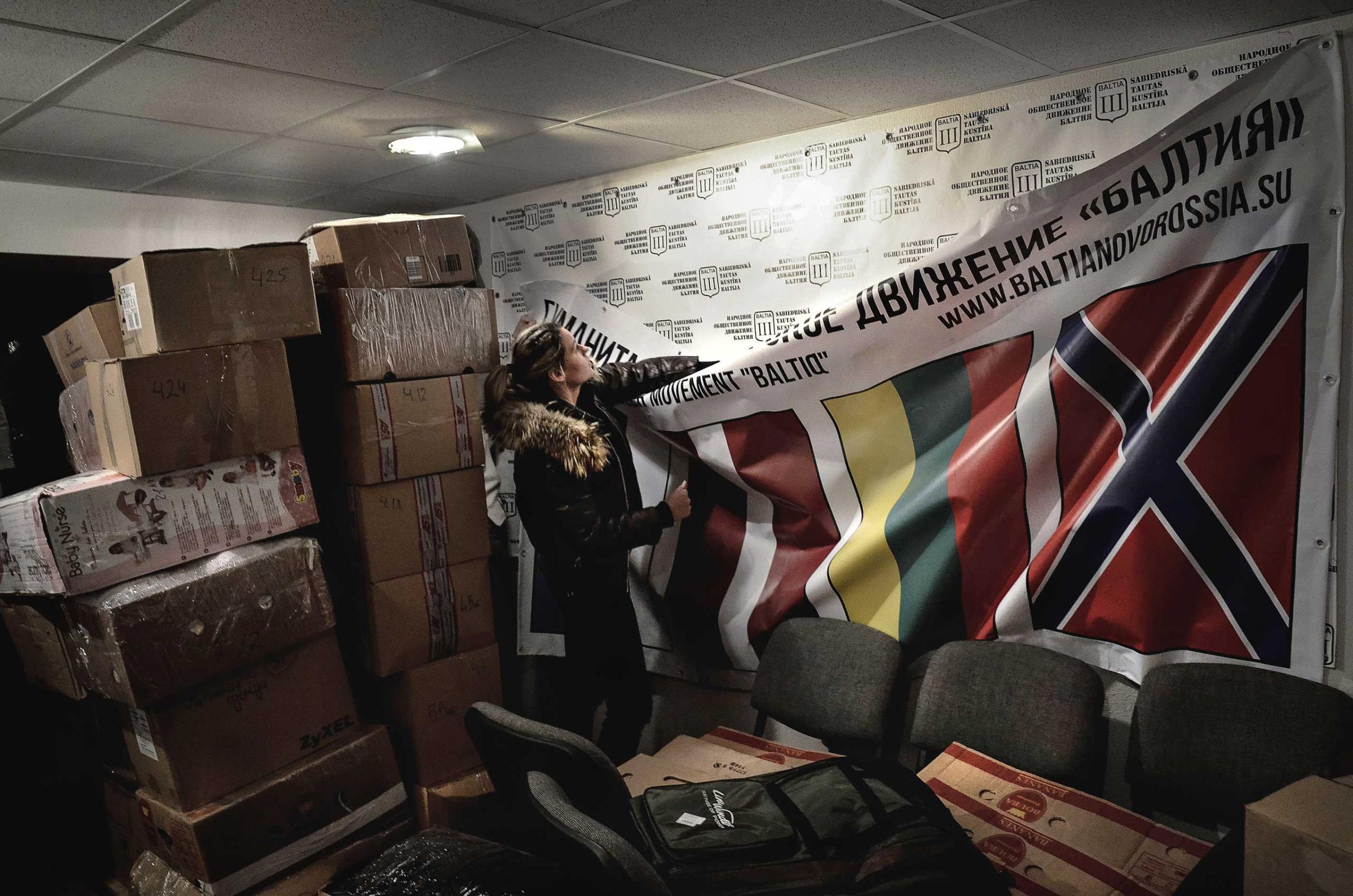
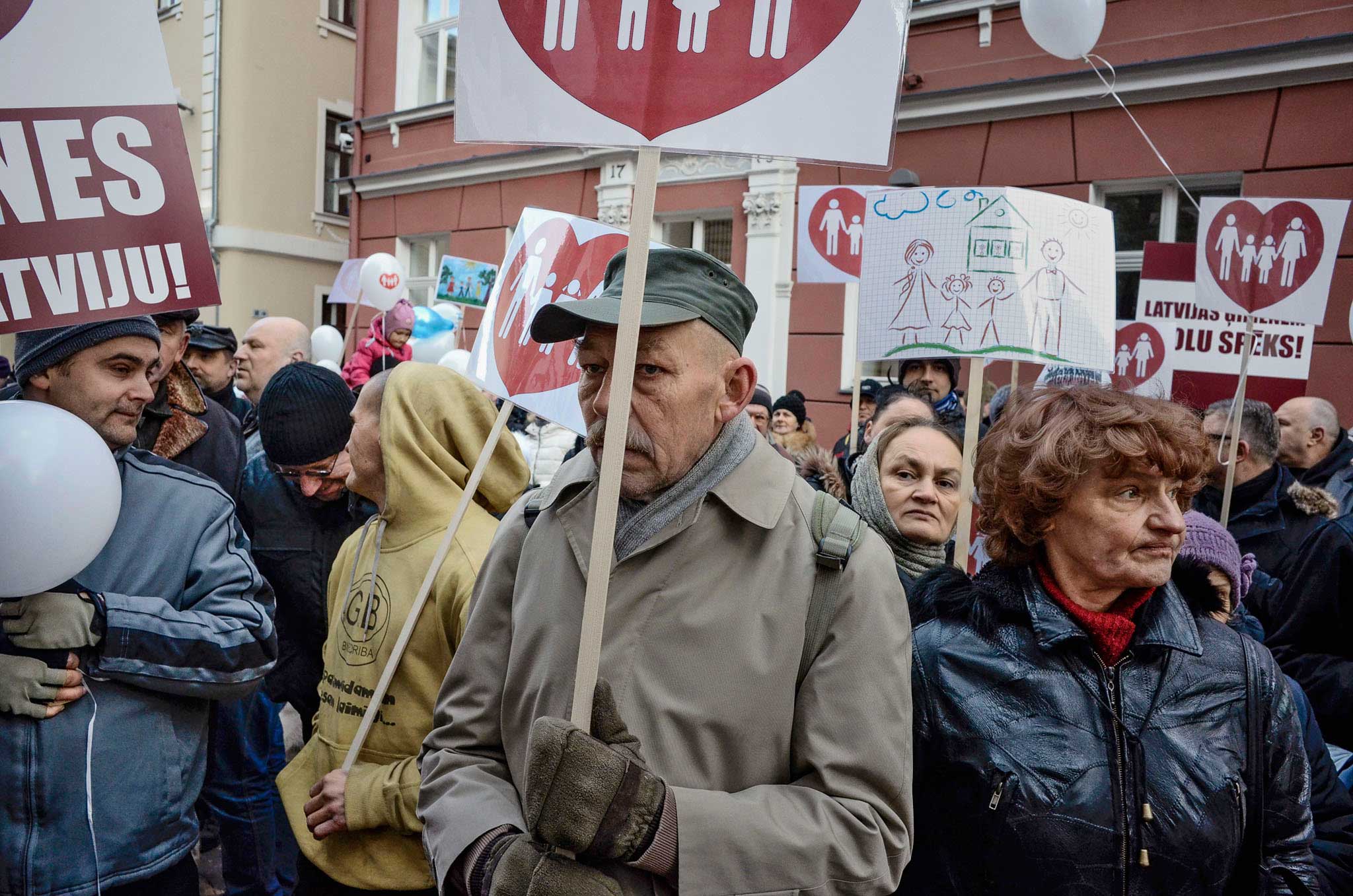
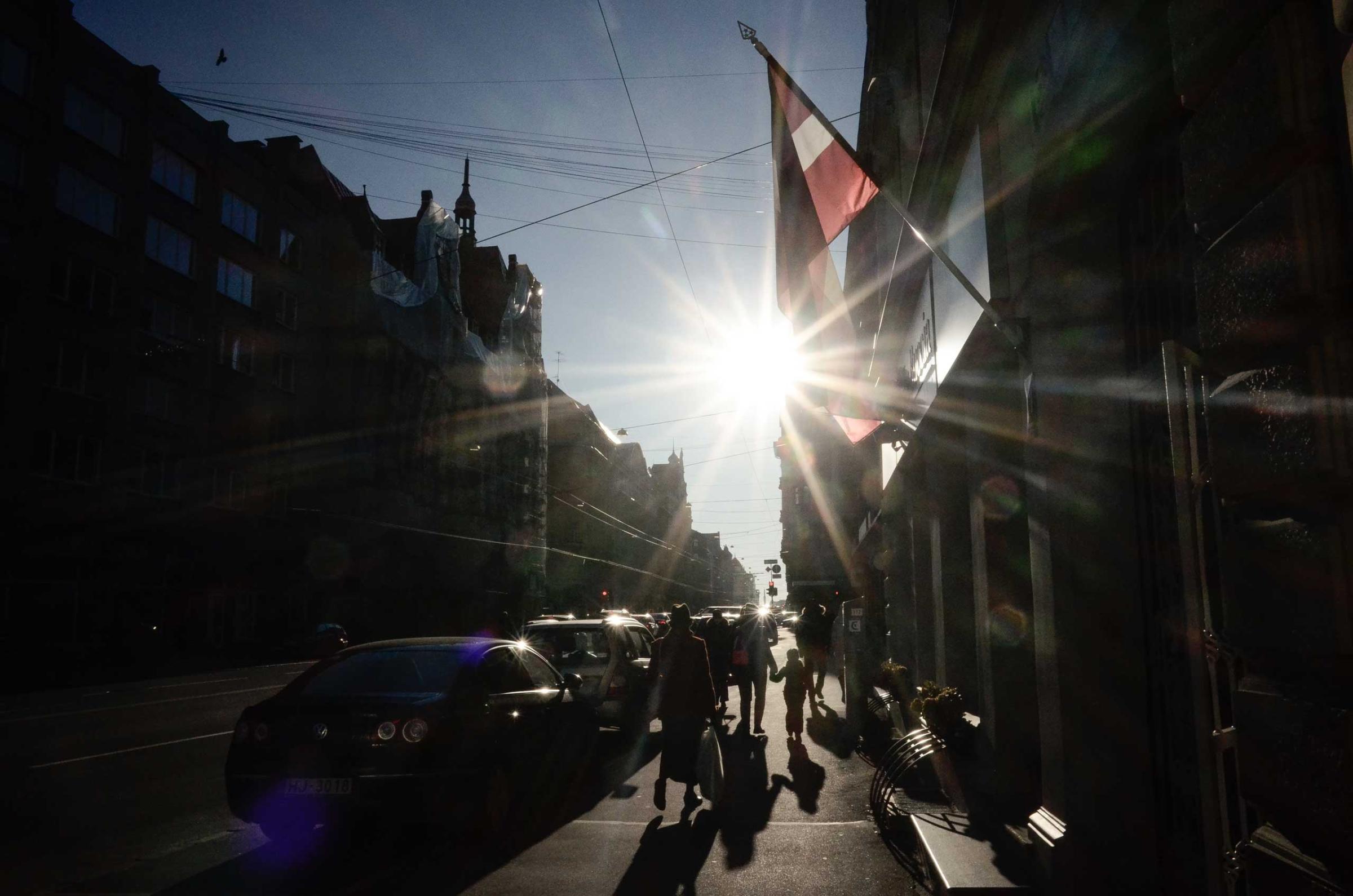
Once a year, beneath the neo-Gothic spires of the Foreign Ministry building in Moscow, Russian diplomats from around the world gather to receive their President’s orders. The summit this year took place in July, a few months after Russia had invaded and annexed the Ukrainian region of Crimea. The address from President Vladimir Putin laid out the new priority for his diplomatic corps: defending ethnic Russians not living in Russia itself.
In Ukraine, Putin said, “militant nationalists” were rising again, leaving millions of ethnic Russians marooned and helpless outside the borders of the motherland. “I want you all to understand,” Putin intoned from the dais, the heavy red drapes of the stage sagging behind him, “our country will continue to defend the rights of Russians, of our compatriots abroad, using everything we have in our arsenal.”
Since Putin’s speech, Russia has taken a variety of steps to increase the Kremlin’s influence over the roughly 10 million ethnic Russians living in Eastern Europe. It has sent envoys to rally and organize the Russian speakers living in the Baltic states of Estonia, Latvia and Lithuania. It has reinforced its military presence and held a series of war games along its western border. It has poured investments into the state-run news networks that beam the Kremlin’s spin to Russian speakers in the region. Russian officials have used every opportunity to echo Putin’s pledge of protection. But Russia’s military support for separatists in eastern Ukraine has sent the clearest message to Russians everywhere: Moscow has your back.
In the jargon of Russia’s military brass, these efforts are part of a strategy known as hybrid warfare. Strategists with Kremlin ties say the plan combines propaganda, diplomacy and, eventually, special-forces troops entering foreign territories in the guise of local rebel forces. Above all, hybrid warfare requires sympathizers inside the country. “In order to wage a hybrid war,” says Konstantin Sivkov, who served as a strategist for the Russian General Staff from 1995 to 2007 and now heads a military think tank in Moscow, “you need a serious opposition force inside the target country, a so-called fifth column, which is a force that is prepared to rise up in support of the foreign invader.”
Putin has used this tactic in Ukraine with great success, annexing Crimea and stirring a pro-Russia separatist uprising in eastern Ukraine. In both cases, local Russian-speaking communities acted as that fifth column. The resulting war between government forces and separatists has claimed more than 4,000 lives and displaced more than a million people. With Russia’s support, the separatists have managed to carve off a breakaway state they call Novorossiya–New Russia–forcing Ukraine to face the loss of its industrial heartland in the east.
The Baltic states, thriving members of the E.U., are far more stable than Ukraine–and less vulnerable to Russian interference. All three of the Baltic states are members of the NATO alliance, which includes the U.S. and most European nations. Under Article 5 of the treaty that binds NATO together, Washington and its 27 allies are obliged to come to the defense of any member attacked by a foreign power. Should Russia invade Estonia or Latvia, perhaps using the rationale that it is protecting the Russian minorities in those countries–just as it did in Crimea–the West would face a sobering choice: go to war with a nuclear-armed state or back down and accept that NATO is no more. So far, U.S. President Barack Obama has indicated that he will stand by Article 5–and the anxious Baltic states. “We have a solemn duty to each other,” Obama said in September when visiting Tallinn, the capital of Estonia. “An attack on one is an attack on all.” But it may not be easy to apply Cold War rules to the age of hybrid warfare.
Close Encounters
That visit to Tallinn came as tensions between Russia and the West had reached a level unseen since the end of the Cold War. In the first 10 months of the year, NATO warplanes scrambled to respond to more than 100 Russian violations of the alliance’s airspace. That was triple the number of such incidents recorded in 2013, and they included flights by Russian fighter jets and nuclear-capable bombers near the Baltic Sea. In September, just two days after Obama’s visit to Estonia, that country’s President claimed invasion of his territory when Russian agents allegedly swept across the border, kidnapped an Estonian security officer and took him to Moscow to stand trial on charges of espionage. He faces 20 years in prison if convicted. The following month, nearly the entire Swedish navy was deployed to hunt for a suspected Russian submarine in the Stockholm archipelago. Moscow denied the submarine’s existence, even as Sweden offered sonar images to prove what it called a “gross and unacceptable violation” of its sovereignty.
The U.S. has also rushed to respond to Russia’s perceived threat. This fall some 600 American forces equipped with tanks and armored vehicles were deployed to Poland, Lithuania, Estonia and Latvia to reassure those allies. At a NATO summit of Foreign Ministers on Dec. 2, alliance leaders approved an interim quick-reaction force of several hundred ground troops, meant to deter any Russian aggression until a larger NATO force of 4,000 to 6,000 troops becomes operational in 2016.
But these limited military initiatives seem inadequate to experts like Ivo Daalder, who served as the U.S. ambassador to NATO from 2009 until the end of last year. Over the past quarter-century, the West has gradually turned its focus to post–Cold War challenges like terrorism. But to Russia’s defense establishment, the Cold War never ended. Russia’s official military doctrine, published in 2010, still lists NATO expansion as the main threat to Russian security. All the while, NATO’s war machine in Eastern Europe has fallen into neglect. By the time Daalder’s term as ambassador ended last year, he notes, “our infrastructure, including the basics, was just very poor to nonexistent.”
U.S. allies in NATO have failed for years to meet their minimum spending commitments on defense, which the alliance has no way to enforce other than peer pressure and public rebukes. Over the past five years, while Russia has increased its defense spending by about 50%, NATO countries in Europe have cut their spending by 20%. But it will require more than a return to Cold War budgets and strategies to address the threat of Russian expansionism, especially since that threat no longer stems only from tank columns and ballistic missiles. “Russia has thrown out the rule book of post–Cold War security policy,” Daalder says. In its stead is a multifaceted strategy designed to unsettle the West under the guise of a seemingly noble goal: protecting ethnic Russians from neo-Nazi persecution in Europe.
Echoes of History
Konstantin Dolgov, a brawny, bespectacled diplomat, is the Foreign Ministry official in charge of defending the rights of ethnic Russians living outside the motherland, with a particular focus on the Baltics. That role makes him the point man of the global mission that Putin spelled out in July–which is why, in an interview with TIME, Dolgov returns again and again to a single theme: There is a fascist menace sweeping through Europe today, just as it did in the 1930s. “The ghost of neo-Nazism is haunting Europe, except it’s not just a ghost anymore,” he says. “That disease, the bacteria of neo-Nazism, is spreading across Europe.”
There is no real evidence of what Dolgov is alleging–arguably the biggest security threat to Europe is Putin himself. But that hasn’t stopped Dolgov from trumpeting the danger. In mid-September, about two weeks after Obama’s visit to Estonia, Dolgov traveled to the capital of neighboring Latvia and presided over a summit of pro-Russian organizations from across the Baltic states. The forum was Dolgov’s chance to encourage the ethnic Russians’ sense of victimhood, to attack the policies of the Baltic governments and to promise them Moscow’s protection from what he called the “neo-Nazi threat” to ethnic Russians in the Baltics.
“We will not make peace with the creeping incursions against the Russian language that we see in the Baltics,” he said from the podium that day, according to a transcript. “A huge portion of our compatriots abroad, entire segments of the Russian world, continue to face serious obstacles in securing their rights and legal interests.” He urged the Russians in the hall to organize and unify in defense of those rights–with Moscow’s support. “From our side, I assure you, our firm, offensive actions shall continue apace.”
Coming six months after Russia’s annexation of Crimea, the speech horrified officials across the Baltics, where memories of a half-century of occupation by Moscow are anything but distant. But Dolgov may be plowing fertile ground. More than a million ethnic Russians were resettled to the Baltics in the decades after World War II as part of a Soviet program of “Russification.” Today even the children and grandchildren of those Russian migrants often feel a greater bond to Moscow than to the Baltic country of their birth. And they may have a reason for grievance: the Russians living in Estonia and Latvia were not granted automatic citizenship after the Soviet Union collapsed. Instead, since the early 1990s, they have been obliged to take tests in their countries’ history and in the official state languages before becoming citizens. Hundreds of thousands of ethnic Russians have refused to accept the terms of citizenship in Latvia and Estonia. As a result, they have been left with the demeaning legal status of “noncitizens,” which deprives them of a number of rights, including the right to vote and run for public office.
So Dolgov–and Putin–have some basis for their claims that Russians are being oppressed in the Baltics. But that criticism does not give Russia the right to meddle in their neighbors’ business, says Andrejs Pildegovics, state secretary of the Latvian Foreign Ministry. “Russia is trying to use these chauvinistic policies,” he tells TIME, “trying to fight for the hearts and minds of people.”
Divide and Conquer
Whoever created it, the division within the Baltics has served Moscow’s interests. The majority of people in several cities in the Baltics are ethnic Russians who feel a deep connection to Moscow. They watch Russian television, read Russian books and send their children to Russian-language schools. Mihails Hesins, an ethnic Russian noncitizen who lives in the Latvian capital of Riga, has refused to take the naturalization exam in the Latvian language. He is bitter about what he sees as the state’s suppression of his culture and has no trust in the government. “And when there is no one to trust,” he says, “a person still needs to trust someone, and the only person left is Russia.”
The fight is on for the allegiance of Russian speakers like Hesins, and no one understands that better than the Latvian authorities. Yet they’ve done little to placate the Russians within their border, instead rallying their NATO allies against Moscow. And the alliance, for its part, has begun to respond. At a major NATO summit in September, the allies agreed to shift their focus back to the Cold War task of deterring Russia. They even pledged to prepare a response to the kind of hybrid warfare that Russia deployed in Crimea. To this end, NATO committed to keeping a continued presence near Russia’s borders, involving air, land and naval forces deployed on a rotating basis.
What is worrisome for the Baltics is that the NATO summit did not clarify the key dilemma that hybrid warfare raises: What would trigger an Article 5 action between the Baltics’ NATO allies? It may well be that NATO leaders are purposefully leaving the answer to that question vague, to give themselves strategic flexibility. President Obama’s struggles over Syria’s chemical weapons demonstrate the drawbacks of drawing explicit red lines in geopolitics. But as the cases of Crimea and eastern Ukraine have shown, Russian incursions are built to look like homegrown rebellions, allowing Moscow plausible deniability–and complicating any Western response. A similar move against the Baltics is “the chilling scenario I most worry about,” says Matthew Bryza, a former U.S. diplomat who now heads the International Centre for Defence Studies, a think tank based in Estonia.
Back at the Foreign Ministry in Moscow, Commissioner Dolgov dismisses such fears as an “aberration” in the minds of Baltic leaders and their American friends. He acknowledges that in Russia’s view, there are parallels to be drawn between Ukraine and the Baltics, namely that “neo-Nazism is what unites Ukraine and the Baltic states today. And Russia is ready to fight back against this. But we will continue fighting back only with the instruments of international law.”
By Russia’s interpretation of international law, however, the invasion and annexation of Crimea earlier this year were perfectly legal. Such assurances provide cold comfort to the leaders of the Baltic states. “The situation has changed this year due to Russian activities in Ukraine,” says Raimonds Vejonis, the Latvian Defense Minister. “We must be ready to adapt to the new situation, ready to react.” The only question is whether the alliance can adapt nimbly enough to keep up with Russia’s unpredictable brand of shape-shifting warfare.
–WITH REPORTING BY CHARLOTTE MCDONALD-GIBSON/RIGA
More Must-Reads from TIME
- Why Trump’s Message Worked on Latino Men
- What Trump’s Win Could Mean for Housing
- The 100 Must-Read Books of 2024
- Sleep Doctors Share the 1 Tip That’s Changed Their Lives
- Column: Let’s Bring Back Romance
- What It’s Like to Have Long COVID As a Kid
- FX’s Say Nothing Is the Must-Watch Political Thriller of 2024
- Merle Bombardieri Is Helping People Make the Baby Decision
Contact us at letters@time.com